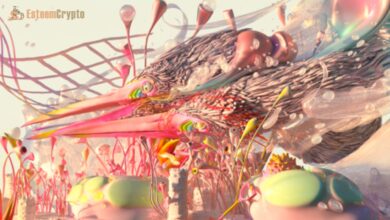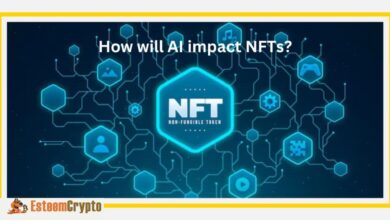Ultimate NFT Marketplace Comparison Guide 2025 Best Platforms Reviewed

The digital asset revolution has transformed how we perceive ownership, creativity, and value in the online world. As non-fungible tokens (NFTs) continue to reshape the creative economy, choosing the right platform becomes crucial for both creators and collectors. This comprehensive NFT marketplace comparison guide will help you navigate the complex landscape of digital marketplaces, examining features, fees, security measures, and user experiences across the industry’s leading platforms.
Whether you’re an artist looking to mint your first NFT, a collector searching for rare digital assets, or an investor exploring the NFT space, understanding the nuances of different marketplaces is essential for success. Each platform offers unique advantages, from specialized art communities to multi-chain compatibility, and making an informed decision can significantly impact your NFT journey.
What Are NFT Marketplaces and Why Do They Matter
NFT marketplaces serve as digital platforms where users can create, buy, sell, and trade non-fungible tokens. These platforms act as intermediaries, providing the infrastructure necessary for NFT transactions while offering various tools and features to enhance the user experience.
The importance of NFT marketplaces extends beyond simple transaction facilitation. They create communities, establish market standards, and often influence the value and perception of digital assets. Different marketplaces cater to various niches, from high-end art collections to gaming assets and utility tokens.
Understanding the marketplace ecosystem is crucial because each platform operates with distinct fee structures, supported blockchain networks, user interfaces, and community cultures. Some prioritize exclusivity and curation, while others focus on accessibility and volume. This diversity means that success on one platform doesn’t guarantee success on another.
Top NFT Marketplaces A Detailed Comparison
OpenSea: The Market Leader
OpenSea stands as the largest and most established NFT marketplace, often considered the “eBay of NFTs.” Launched in 2017, it has maintained its position through continuous innovation and broad market appeal.
Key Features:
- Multi-chain support including Ethereum, Polygon, Klaytn, and Arbitrum
- Comprehensive search and filtering options
- Collection management tools for creators
- Bulk listing and purchasing capabilities
- Integration with major wallets like MetaMask and Coinbase Wallet
Advantages:
- Largest user base and highest liquidity
- Wide variety of NFT categories
- Established reputation and trust
- Regular platform updates and new features
- Strong mobile app experience
Disadvantages:
- High gas fees during network congestion interface can be overwhelming for beginners.
- Limited curation means quality varies significantly
- Customer support response times can be slow
Fee Structure: OpenSea charges a 2.5% service fee on successful sales, with additional blockchain transaction fees depending on the network used.
Blur The Trader’s Paradise
Blur emerged as a serious competitor to OpenSea by focusing specifically on professional NFT traders and collectors. The platform prioritizes speed, advanced trading features, and lower fees.
Key Features:
- Portfolio management dashboard
- Advanced filtering and analytics
- Batch operations for efficient trading
- Real-time price updates
- Aggregated listings from multiple sources
Advantages:
- Zero marketplace fees for a limited time
- Superior trading interface for professionals
- Faster transaction processing
- Comprehensive market analytics
- Strong focus on user experience for traders
Disadvantages:
- Less beginner-friendly interface
- Smaller overall user base compared to OpenSea
- Limited creative tools for artists
- Primarily Ethereum-focused
Magic Eden The Solana Specialist
Magic Eden has established itself as the premier NFT marketplace on the Solana blockchain, offering fast transactions and low fees that attract both creators and collectors.
Key Features:
- Native Solana integration
- Launchpad for new projects
- Creator verification system
- Community-driven curation
- Mobile-first design approach
Advantages:
- Extremely low transaction fees
- Fast transaction confirmation times
- Strong community engagement
- Excellent mobile experience
- Growing ecosystem of Solana NFTs
Disadvantages:
- Limited to Solana blockchain initially (now expanding)
- Smaller market compared to Ethereum-based platforms, less established artist community
- Fewer high-value collections
Foundation: The Curated Art Platform
Foundation positions itself as a premium, invitation-only platform focused on digital art and creative expression. It emphasizes quality over quantity through its curation model.
Key Features:
- Invitation-based creator onboarding
- Auction-style sales format
- High-quality art focus
- Social features for community building
- Editorial content and artist spotlights
Advantages:
- High-quality, curated content
- Strong brand recognition in art circles
- Premium positioning attracts serious collectors
- Excellent user interface design
- Active community engagement
Disadvantages:
- Limited access for new creators
- Higher barriers to entry
- Smaller overall market size
- Less diverse content categories
Key Factors to Consider in Your NFT Marketplace Selection
Transaction Fees and Cost Structure
Understanding fee structures is crucial for maximizing profits and minimizing costs. Most marketplaces charge service fees ranging from 0% to 10%, with additional blockchain transaction fees (gas fees) varying by network.
Ethereum-based platforms typically have higher gas fees during peak usage, while alternative blockchains like Solana, Polygon, and Tezos offer significantly lower transaction costs. Consider your trading frequency and transaction sizes when evaluating cost implications.
Blockchain Compatibility and Multi-Chain Support
The blockchain ecosystem continues to expand, with different networks offering various advantages. Ethereum remains the largest NFT ecosystem but comes with higher costs. Alternative chains like Solana, Polygon, and Arbitrum provide faster, cheaper transactions while maintaining security.
Multi-chain platforms offer flexibility and access to different communities, but single-chain specialists often provide more optimized experiences for their specific networks.
User Interface and Experience Design
Platform usability significantly impacts your NFT experience. Consider factors like search functionality, mobile responsiveness, wallet integration, and overall design aesthetics. Professional traders might prefer advanced interfaces with detailed analytics, while casual users typically benefit from simplified, intuitive designs.
Security Measures and Platform Reputation
Security should be a top priority when choosing an NFT marketplace. Look for platforms with strong track records, regular security audits, and transparent communication about potential risks. Consider the platform’s history of handling security incidents and its customer support quality.
Community and Creator Support
Active communities enhance the NFT experience through networking opportunities, market insights, and creative collaboration. Evaluate the platform’s creator support programs, educational resources, and community engagement initiatives.
Specialized Marketplace Categories
Gaming NFT Platforms
Gaming NFTs represent a rapidly growing sector with specialized marketplaces focusing on in-game assets, virtual land, and gaming collectibles. Platforms like Immutable X and Enjin Marketplace cater specifically to gaming communities.
Art-Focused Marketplaces
Platforms like SuperRare and KnownOrigin specialize in digital art, offering curated experiences that appeal to serious art collectors and established artists.
Music and Entertainment NFTs
Specialized platforms for music NFTs, such as Audius and Royal, provide unique features for artists and fans in the entertainment industry.
Sports and Celebrity NFTs
Platforms like NBA Top Shot and Sorare focus on sports-related NFTs, leveraging official partnerships and brand recognition.
How to Choose the Right NFT Marketplace for Your Needs
For New Creators
New creators should prioritize platforms with low barriers to entry, comprehensive onboarding resources, and supportive communities. Consider starting with platforms that offer free minting options or creator incentive programs.
For Serious Collectors
Experienced collectors might prefer platforms with advanced analytics, bulk purchasing capabilities, and access to high-value collections. Consider platforms with strong curation and authentication processes.
For Casual Users
Casual users benefit from user-friendly interfaces, educational resources, and platforms with diverse content categories that match their interests.
For Professional Traders
Professional traders need platforms with advanced trading tools, real-time market data, portfolio management features, and competitive fee structures.
Future Trends in NFT Marketplace Development
The NFT marketplace landscape continues evolving rapidly, with several key trends shaping the future:
Cross-Chain Interoperability: Future marketplaces will likely offer seamless cross-chain functionality, allowing users to trade NFTs across different blockchain networks without friction.
Enhanced Creator Tools: Platforms are investing in sophisticated creation tools, including AI-assisted design features, collaborative creation spaces, and integrated marketing tools.
Improved Discovery Mechanisms: Advanced recommendation algorithms and social features will help users discover relevant content and connect with like-minded community members.
Regulatory Compliance: As regulations develop, marketplaces will implement stronger KYC/AML procedures and compliance measures to ensure legal operation across jurisdictions.
Environmental Sustainability: Increased focus on eco-friendly blockchain solutions and carbon-neutral trading options will influence platform development and user preferences.
Security Best Practices for NFT Marketplace Users
Wallet Security
Use hardware wallets for high-value transactions and never share private keys or seed phrases. Enable two-factor authentication wherever possible and regularly update wallet software.
Platform Verification
Always verify you’re accessing official marketplace websites and avoid suspicious links or phishing attempts. Check platform URLs carefully and bookmark official sites.
Due Diligence
Research creators and collections before purchasing, verify authenticity when possible, and be cautious of deals that seem too good to be true.
Smart Contract Awareness
Understand the smart contracts you’re interacting with and be aware of any unusual permissions or terms before confirming transactions.
Maximizing Success on NFT Marketplaces
For Creators
Build a strong personal brand, engage actively with the community, maintain consistent quality standards, and utilize platform-specific features to increase visibility.
For Collectors
Develop expertise in specific niches, follow market trends, build relationships with creators and other collectors, and maintain a long-term perspective on investments.
Marketing and Promotion Strategies
Leverage social media integration, participate in community events, collaborate with other creators, and utilize platform promotional features when available.
Common Mistakes to Avoid
Platform Selection Errors
Avoid choosing platforms based solely on popularity without considering your specific needs, fee structures, and target audience alignment.
Security Oversights
Never ignore security warnings, always verify transactions before confirming, and maintain proper wallet hygiene to prevent asset loss.
Market Timing Issues
Avoid making emotional decisions based on short-term market fluctuations and maintain realistic expectations about NFT value appreciation.
Also Read: NFT Marketplaces Offering Full Support for NFT Creator Royalties
Conclusion
Choosing the right NFT marketplace requires careful consideration of your specific needs, goals, and preferences. This comprehensive NFT marketplace comparison guide has explored the leading platforms, their unique features, and the factors that should influence your decision-making process.
Whether you prioritize low fees, high-quality curation, advanced trading features, or community engagement, there’s a marketplace that aligns with your objectives. The key is understanding your requirements and matching them with platform strengths while considering long-term implications for your NFT journey.
As the NFT space continues to evolve, staying informed about platform developments, new features, and emerging competitors will help you adapt your strategy and maximize success. Remember that you’re not limited to a single platform – many successful creators and collectors maintain a presence across multiple marketplaces to diversify their reach and opportunities.




